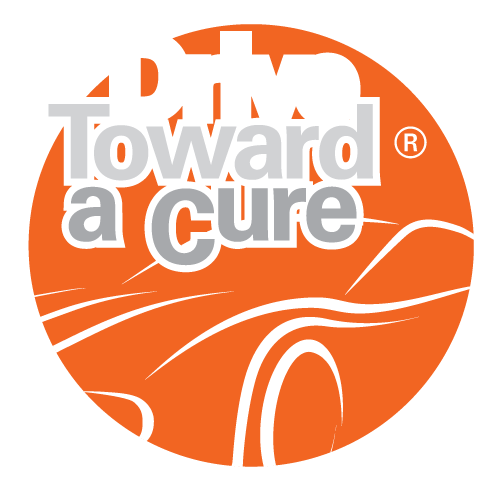About Parkinson’s Disease
What is Parkinson’s Disease?
Text based on content from Andy McDowell’s web site. “What is Parkinson’s Disease?” video from the Michael J. Fox Foundation.
Simply put…
PD is the progressive degeneration of the dopamine-producing cells in the brain leading to symptoms that include tremors, stiffness and rigidity, and slowness of movement.
Is there a cure?
No – and symptoms typically only become clear after the sufferer has already lost 70 per cent of the dopamine-producing cells. The best-known treatments include drugs and “deep brain” stimulation, where a nuerotransmitter is implanted in the chest and wires inserted into the brain to electrically stimulate the areas that control movement.
Visible (Motor) Symptoms
Parkinson’s disease symptoms and signs do vary from person to person. Early signs may be mild and often go unnoticed. Symptoms often begin on one side of your body and usually remain worse on that side, even after symptoms begin to affect both sides. Parkinson’s signs and symptoms may include
- Tremor. Your tremor, or shaking, usually begins in a limb, often your hand or fingers. You may notice a back-and-forth rubbing of your thumb and forefinger known as a pill-rolling tremor. One characteristic of Parkinson’s disease is a tremor of your hand when it is relaxed (at rest).
- Slowed movement (bradykinesia). Over time, Parkinson’s disease may reduce your ability to move and slow your movement, making simple tasks difficult and time-consuming. Your steps may become shorter when you walk, or you may find it difficult to get out of a chair. Also, you may drag your feet as you try to walk, making it difficult to move.
- Rigid muscles. Muscle stiffness may occur in any part of your body. The stiff muscles can limit your range of motion and cause you pain.
- Impaired posture and balance. Your posture may become stooped, or you may have balance problems as a result of Parkinson’s disease.
- Loss of automatic movements. In Parkinson’s disease, you may have a decreased ability to perform unconscious movements, including blinking, smiling or swinging your arms when you walk. You may no longer gesture when talking.
- Speech changes. You may have speech problems as a result of Parkinson’s disease. You may speak softly, quickly, slur or hesitate before talking. Your speech may be more of a monotone rather than with the usual inflections. A speech-language pathologist may help improve your speech problems.
- Writing changes. Writing may appear small and become difficult.
Invisible (Non-Motor) Symptoms
Most people with Parkinson’s experience non-motor symptoms, those that do not involve movement, coordination, physical tasks or mobility. While a person’s family and friends may not be able to see them, these “invisible” symptoms can actually be more troublesome for some people than the motor impairments of PD.
Early Symptoms
Many researchers believe that non-motor symptoms may precede motor symptoms — and a Parkinson’s diagnosis — by years. The most recognizable early symptoms include:
- loss of sense of smell
- constipation
- REM behavior disorder (a sleep disorder)
- mood disorders (that’s code for depression)
- orthostatic hypotension (low blood pressure when standing up).
Other Non-motor Symptoms
Some of these important and distressing symptoms include:
- sleep disturbances
- constipation
- bladder problems
- sexual problems
- excessive saliva
- weight loss or gain
- vision and dental problems
- fatigue and loss of energy.
- depression
- fear and anxiety
- skin problems
- cognitive issues, such as memory difficulties, slowed thinking, confusion and in some cases, dementia
- medication side effects, such as impulsive behaviors
Who Has Parkinson’s?
- About one million Americans live with Parkinson’s disease (PD), which is more than the combined number of people diagnosed with multiple sclerosis, muscular dystrophy and Lou Gehrig’s disease (or Amyotrophic Lateral Sclerosis)
- Approximately 60,000 Americans are diagnosed with PD each year.
- More than 10 million people worldwide are living with PD.
- Incidence of Parkinson’s disease increases with age, but an estimated four percent of people with PD are diagnosed before age 50.
- Men are 1.5 times more likely to have Parkinson’s disease than women.
Estimated Healthcare Costs
- The combined direct and indirect cost of Parkinson’s, including treatment, social security payments and lost income, is estimated to be nearly $25 billion per year in the United States alone.
- Medications alone cost an average of $2,500 a year and therapeutic surgery can cost up to $100,000 per person.
Smaller – A Poem about Parkinson’s
Andy McDowell was diagnosed with early onset PD in December, 2009, aged 43. He wrote the poem “Smaller” for his children – to help them understand what was happening to him. The defining message being that whilst Parkinson’s has forever changed him – and the body he inhabits – he’s still his own man.
He lives in Auckland New Zealand with his wife Kate and their 2 children, Lily and Pearl, and runs a marketing consultancy. Visit Andy’s site at www.smaller.co.nz.
Connecting Cars and Parkinson’s
Playing host to the Northern California departure point of the inaugural Drive Toward a Cure “California Adventure”, The Blackhawk Museum very kindly recorded some of the sights and sounds of the morning. They produced this short video featuring Dr. Carrolee Barlow, CEO of The Parkinson’s Institute, which sheds some light on just why we do what we do!
